REVIEW – It’s hard to come up with anything new in turn-based strategy – the genre has a long history – but Yaza Games’ Inkulinati, published by Daedalic Entertainment, draws inspiration from something that game developers have mostly avoided: medieval codices.
The Middle Ages is a very thoroughly represented historical period in the world of video games: just think of grand strategy game series such as Age of Empires, Crusader Kings or Total War. Nor is its presentation limited exclusively to RTS and turn-based games. For example, Kingdom Come: Deliverance, one of the best single-player RPGs in recent years, has done an outstanding job of presenting the world of the early 15th century. Yaza Games’ indie production, Inkulinati, offers a different perspective on the deep love of medieval history and art, paying homage to the most curious and iconic art form of the era, the marginalia.
The sword-wielding rabbit, the cat bishop and the man-eating snail
Anyway, what is the concept of marginalia? I’m sure you’ve had the experience of decorating your notebook or textbook with tiny notes and scribbles (or even spectacular drawings) during a very dull class at school. Incredible as it may seem, even the medieval monks who copied the codices found it boring when they had to copy the same Bible for the seventy-eighth time. They would then embellish the margins of the parchment pages with humorous quips and funny comments. Sometimes, they scribbled – and oh boy, they scribbled what! Suffice it to say that obscene themes, from the penis tree to the penis-headed snail, dominated the margins. But before we declare the poor medieval scribblers to be sexually frustrated incels, it is important to note that they often left behind highly imaginative drawings reflecting the social conditions or theological conflicts of their time, which are now being interpreted by a succession of historians and codexologists.
So-called “depictions of chaos” are pretty common. In this case, this does not refer to the horned demons of the Warhammer universe (although devils are popular characters in the scribbles) but to the world being “upended”, so to speak. One of the manifestations of this is preserved in the Hungarian language in the saying, “Don’t let the rabbit take the shotgun”. In other words, animals turn against humans and commit all sorts of monstrosities, usually anthropomorphically depicted, armed with weapons. There may also be an associative link between them, for example, in the case of the battle between armoured knights and snails, also wearing ‘armour’, which is a common theme in the marginal drawings of late medieval and Renaissance manuscripts. These are apocalyptic visions, but also parodies: more innocent forms of mockery. A monk could not put obscene phrases into the mouth of a bishop on the pages, even if he had witnessed them being uttered. But a cat in a bishop’s hat is an entirely different matter. After all, who would take seriously such a margo-graph, which could easily be taken to mean that “any correspondence with reality is merely a coincidence”…?
Be careful, or I’ll draw my pen!
In Inkulinati, we play the role of a copyist with a vivid imagination, determined to beat all his fellow professionals. The game itself is a roguelite, somewhere halfway between Darkest Dungeon and Worms 2 / Armageddon, with a slight Dungeon Keeper twist. All of this is presented with a graphical presentation that looks like it was inspired by Terry Gilliam’s animations for Monty Python’s Flying Circus, alongside the original illustrations.
The gameplay consists primarily of controlling a small army of “Beasts” in a nicely drawn, vertically traversable 2D space while trying to eliminate enemy scribe creatures in the most efficient way possible (for example, by pushing them off the edge of the map, which is a fun prank.) Inkulinati offers several game modes: the Academy is a tutorial, which is well worth a thorough playthrough. Otherwise, you’ll soon find yourself with no idea which of your little monsters to use for what and how. Journey Mode is the campaign, which is highly customisable. It offers three starting forces, but there’s a lot more difference between the teams of thieving foxes, belligerent dogs, and… er, I mean, intestine-gas-operating rabbits than the different combat modes. It’s a good idea to look carefully at the campaign options and the attributes of the newcomers; for the latter, the game offers a neat Bestiary. The third game mode is the Duel Mode against AI or flesh-and-blood players, which is roughly skirmish battles, also with plenty of options and choices.
There are more than fifty different Beasts in the game, from the fire-breathing devil to the man-eating giant snail to my personal favourite, the army of ‘undead’ inspired by the plague corpse illustrations. The last time we saw a company as funny as these was in Tim Burton’s The Dead Bride. In the form of so-called “Hand Actions”, you can boost your warriors, for example, by “Anointing” them. Even with all this, the game gets a bit monotonous after a while. Especially since some of the Beasts – exceptional characters like the “Bishop”, who can fight and heal, or the devils – are so powerful that it’s hard to choose anyone else to replace them on the roster. The creators must have realised this because they introduced a “Boredom Status” system, steadily increasing the ink cost of frequently used Beasts. On the other hand, in some missions, you can control the “avatar” of the codex artist (“Tiny”) on the map as a sort of “commander” character – against whom, of course, the avatar of the enemy copyist will appear.
Is the ink drying up on the Inkulinati?
Inkulinati has definitely benefited from a year of Early Access. Both the Beasts and the tactical options available in battle are much more balanced and usable than before. However, we still can’t get past the fact that the game can be annoyingly difficult sometimes, even for an experienced player. In addition, despite the significant replayability (as you unlock more Beasts, the number of options increases), the monotony is not really eliminated. It can also be frustrating for tactical game fans that Journey Mode becomes a puzzle-solver, where you have to find the only “right” solution instead of trying different tactics to succeed. For example, only the same type of Beast is truly effective against some of the stronger Beasts, but until we’ve defeated it, we can’t “draw” one for ourselves. It’s a nice challenge at first, but by the sixth or eighth time or so, it’s enough to make you frustrated.
However, the game’s visuals, music, sounds (oh, those sweet death screams of creatures falling from the edge of the map!) and presentation in general are excellent. In addition, although the visual style is the star of the show, behind the halberd-wielding dog-knights and dancing plague skeletons lies a competent, captivating roguelite. Whether you’re a fan of medieval art or just looking for a bit of humour and relaxation, Inkulinati will keep you awake into the night like a monk copying a highly intriguing forbidden manuscript by candlelight.
-ROD-
Pro:
+ Extremely imaginative choice of themes
+ Well thought-out game mechanics
+ Super-funny presentation
Cons:
– Campaign becomes monotonous over time
– Bit of a slow start
– Small balance issues
Publisher: Daedalic Entertainment
Developer: Yaza Games
Style: Turn-Based Strategy
Release date: 31 January 2024
Inkulinati
Gameplay - 8.5
Graphics - 9
Story - 8
Music/Audio - 8
Ambience - 9
8.5
EXCELLENT
Although the visual style is the star of the show, behind the halberd-wielding dog-knights and dancing plague skeletons lies a competent, captivating roguelite. Whether you're a fan of medieval art or just looking for a bit of humour and relaxation, Inkulinati will keep you awake into the night like a monk copying a highly intriguing forbidden manuscript by candlelight.

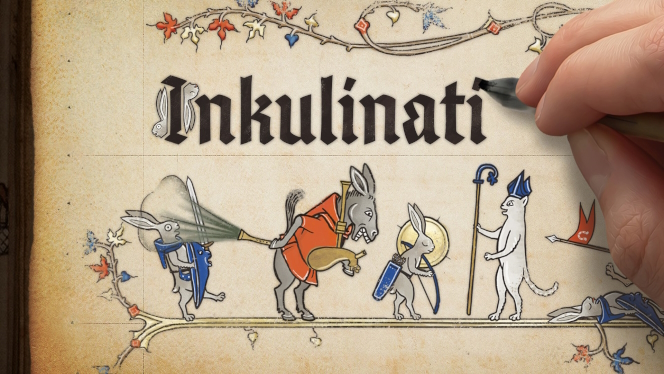
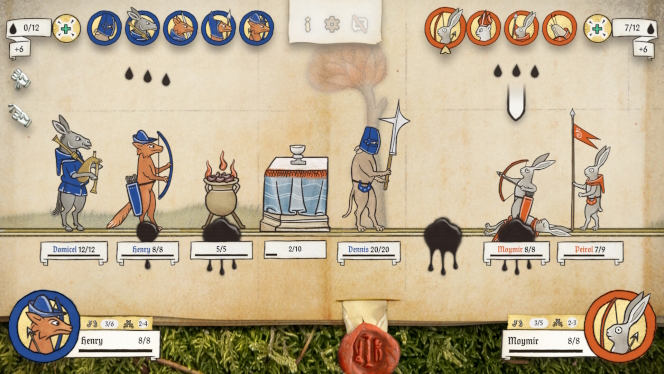
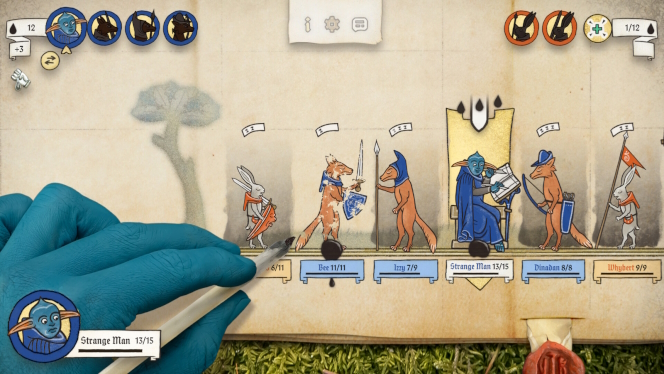
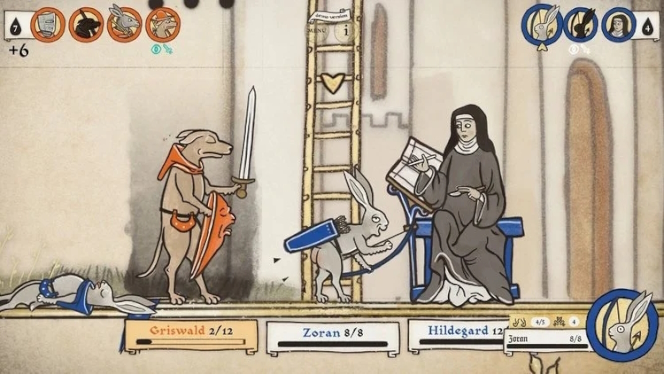





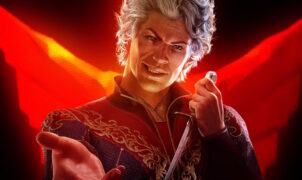








Leave a Reply